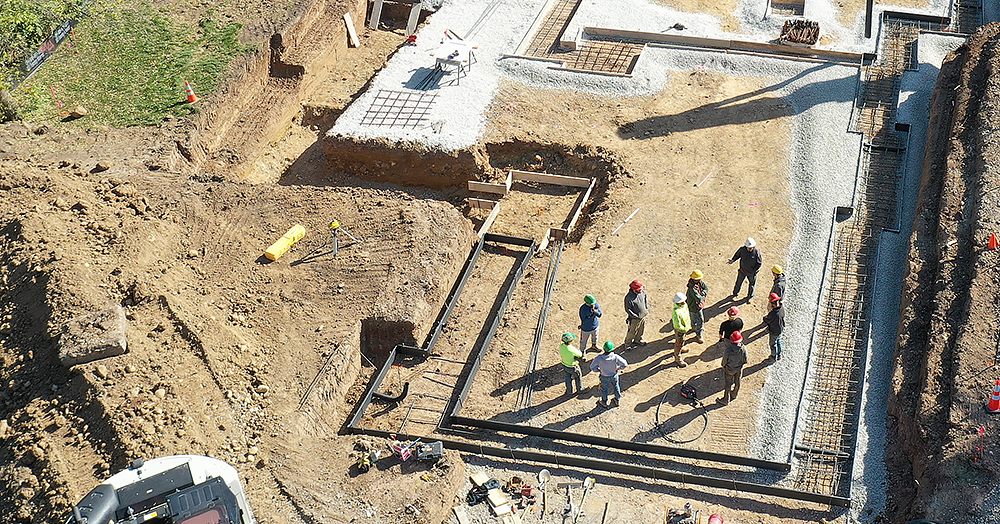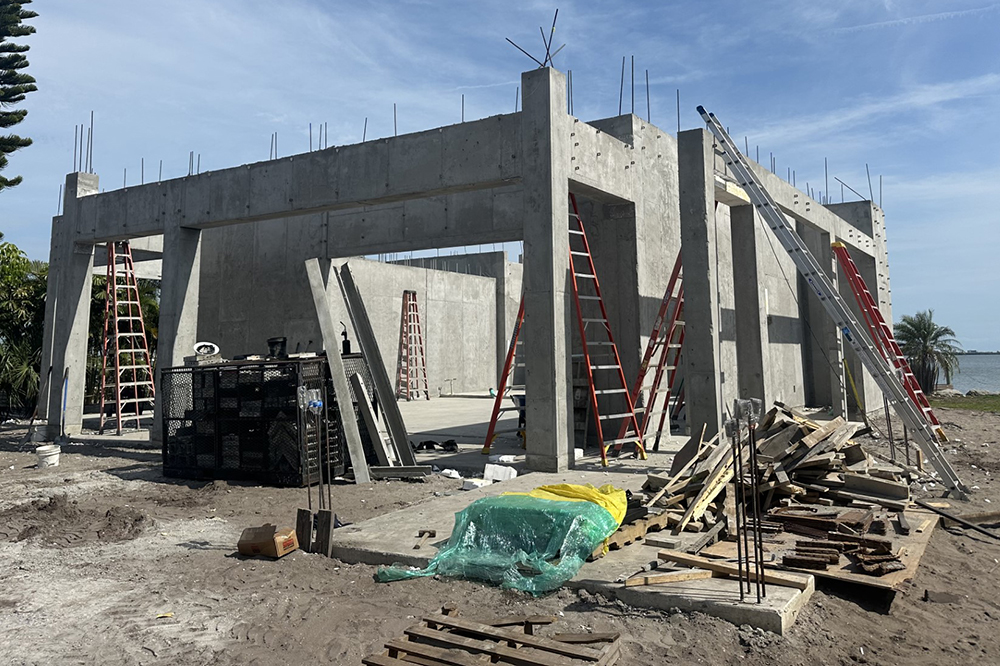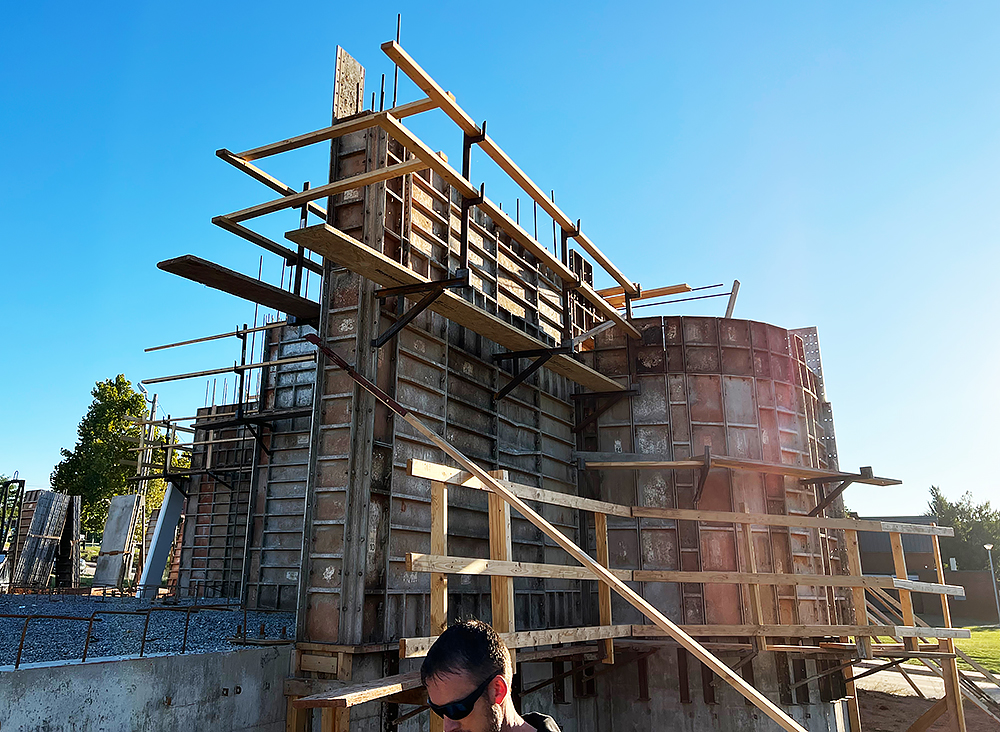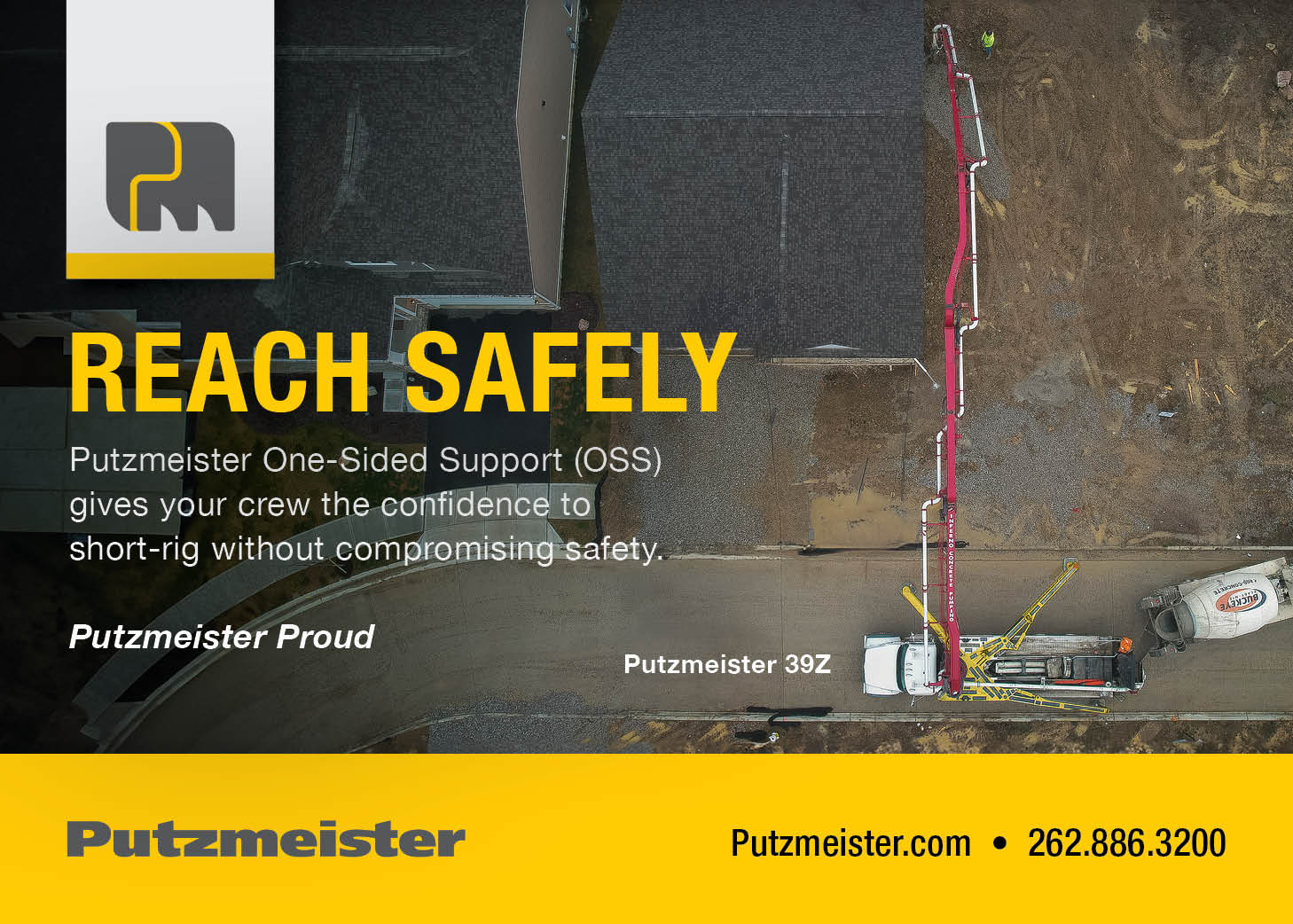Laying the Foundation for Safety: The CFA’s Take on OSHA’s Top 10 Violations

Safety communication and PPE on display as CFA member, Coello & Associates improves performance
I. Introduction
Construction and workplace safety are ever-evolving, with the consistent imperative being to adapt and improve. A critical tool in this endeavor is the annual list of the top ten safety violations released by the Occupational Safety and Health Administration (OSHA). This list does more than just highlight prevalent safety issues—it serves as a compass, pointing toward the areas that demand the most vigilance and intervention.
For professionals in the concrete industry, the implications of OSHA’s findings are profound. In response to OSHA, the Concrete Foundations Association (CFA) has taken preventative action, conducting a survey that mirrors OSHA’s list against the self-assessed readiness and compliance of CFA members. This initiative is not just about recognizing areas of risk, but also acts as an opportunity for a deep investigation into how these violations apply to, and at times differ within, the specifics of the concrete sector.
As we sift through the data, patterns emerge and an industry-specific “Top 10” safety list begins to take shape, challenging the one-size-fits-all view previously suggested by OSHA’s “Top 10.” It is through this lens that the article will discuss the CFA’s findings, juxtaposing member and competition grades, while delivering a narrative that is both educational and critical for the advancement of workplace safety in our industry.
II. Methodology of the CFA Survey
To distill a realistic snapshot of industry compliance and safety, the Concrete Foundations Association embarked on a survey that delves into OSHA’s Top 10 Safety Violations. The methodology was meticulous and thoughtful, designed to yield insights that are as actionable as they are instructive.
The survey reached out to a targeted group within the CFA’s membership, calling upon industry leaders to not only self-assess but also provide a comparative analysis against their competitors. This dual perspective offers a rich, multifaceted view of safety standards across the field.
Participants were asked to grade their company on each of OSHA’s noted violations, using a familiar letter grade system—ranging from A to F. An ‘A’ grade corresponds with a high level of compliance and initiative, suggesting that the company not only meets but exceeds OSHA standards by using proactive safety measures. A ‘B’ score reflects significant compliance with acknowledged room for improvement. A ‘C’ grade aligns with the minimum OSHA standards—compliant, yet perhaps lacking progressive safety measures. Grades descending from ‘D’ to ‘F’ indicate areas of increasing concern, highlighting potential risks and oversight, or situations where the standard may not seem directly relevant to the company’s operations.
It’s through this grading that CFA aimed to uncover not just the average level of safety adherence but also to gain a nuanced understanding of where the industry sees itself compared to how it perceives its peers in the context of these critical safety benchmarks.

Ladders are often assumed to not be significant for cast-in-place concrete, however, ladder safety should be a priority, as CFA Member, TCB Walls demonstrates
III. Analysis of Survey Results
The CFA survey results provide a revealing cross-section of the industry’s safety practices as measured against OSHA’s Top 10 Safety Violations for 2023. Let’s take a closer look at each category and decipher the narrative behind the numbers.
Fall Protection – General Requirements topped the list with a B+ average, underscoring a strong adherence to safety measures but also a candid acknowledgment of slips, trips, and falls still being significant issues. The ‘C’ rating from the competition’s perspective suggests a more critical view, hinting at complacency in the broader industry that needs addressing.
Hazard Communication averaged a B grade, reflecting a respectable level of safety communication within companies. However, the fact that some competitors are rated ‘D’ hints at inconsistent practices across the field, emphasizing the need for continuous education and reinforcement of safety protocols.
Ladders, while receiving a C+ average, brought to light the variability in usage and safety practices, with a notable number of respondents feeling this area was not applicable to their operations. This indicates a potential undervaluation of ladder safety in certain sectors.
Scaffolding stood out with a B+ average, showcasing a commitment to enhancing equipment and training, particularly for complex commercial projects. In contrast, the ‘F’ grade given by one member to their competition is a stark reminder of the disparities in industry opinions for what constitutes a ‘safe practice.’
For Powered Industrial Trucks, participants reported an average grade of B+. This suggests robust training and operational safety, yet the absence of a consensus on competition grades begs the question of how we can achieve industry-wide consistency in this area.
Lockout/Tagout practices received a mixed response with a B average, reflecting well on adherence to proper procedures but also exposing the occasional use of incorrect tagging methods. As a result, this area appears ripe for targeted improvement.
Respiratory Protection scored a solid B+ on average, indicating a noteworthy achievement in engineering out many respiratory hazards despite the occasional ‘Fs’ from the competition which points to potential practice discrepancies.
Fall Protection Training requirements received a B+ average, with respondents acknowledging the challenges of training workers for unfamiliar tasks, exemplifying the importance of ongoing education in this area.
The category of Personal Protective and Lifesaving Equipment – Eye and Face Protection received one of the highest averages at A-, demonstrating strong compliance and pinpointing an area where the industry takes considerable pride. Nevertheless, issues like seasonal transitions affecting PPE adherence signal a need for continued attention.
Finally, Machine Guarding, with a B average, was noted as an area that’s sometimes overlooked, particularly with material conveyor trucks, emphasizing the importance of maintaining vigilance in equipment safety.
These results paint a picture of an industry earnestly striving for safety, while also shining a spotlight on areas where improvement is not just possible but essential. As we juxtapose member grades with competition perceptions, it is evident that while some companies lead the way in safety standards, the industry as a whole has significant room for growth.
IV. Commentary and Insights from Industry Leaders
The raw data from the CFA survey is brought to life by the experiences and reflections shared by the respondents. Their commentary sheds light on the multifaceted challenges of adhering to safety protocols within the concrete industry.
For example, the survey revealed that ladders, while not frequently used by all, represent a significant safety challenge when they are employed. The underutilization in certain sectors, such as ladder safety, suggests that routine proficiency might be lacking, creating a blind spot that requires targeted attention.
In discussions about respiratory protection, it was noted that although comprehensive hazard controls have reduced the need for respirators, there are still pockets within the industry where their use is inconsistent, particularly for infrequent tasks. This points to the need for reinforced training and vigilance, especially for occasional high-risk activities.
Machine guarding was another area of focus, with respondents underscoring the critical nature of this safeguard, especially in the context of material conveyor trucks. A past incident involving a missing guard was cited as a pivotal learning moment, emphasizing the continuous need for stringent safety checks and a culture that proactively addresses every detail.
The survey also illuminated the complexities surrounding fall protection training. While general training received high marks, members recognized the difficulty in adapting training for workers transitioning to unfamiliar tasks, illustrating that safety education must be flexible and task-specific to be fully effective.
In terms of personal protective equipment (PPE), the industry generally excels, but challenges in compliance were noted. Variability in adherence, particularly affected by seasonal changes or amongst different demographics within the workforce, suggests an ideal area for improvement.
Collectively, the feedback from industry leaders demonstrates a significant theme: adherence to safety standards is not uniform, and the depth of understanding and applying these standards can vary considerably across the industry. It is evident that areas often perceived as strongholds of safety could benefit from renewed focus and enhanced training initiatives.
V. Confronting Workforce Challenges in Compliance
The concrete industry, like many sectors today, faces a complex challenge: an aging workforce juxtaposed against a newer generation of workers. This demographic shift brings about unique compliance challenges within the landscape of workplace safety.
The seasoned professionals, who are approaching retirement, carry with them invaluable experience and a deep-rooted understanding of safety protocols. However, this group is contending with the inevitable changes in dexterity, mobility, and flexibility. It’s essential that their knowledge is effectively passed on and adapted to fit the evolving nature of the field.
On the other end of the spectrum, the industry is being infused with a younger, more diverse workforce. While they bring athleticism and a fresh perspective, they often lack the years of experience that inform safe practices. This gap is not insurmountable, but it does require a deliberate approach to training and mentorship. Fostering a culture that values safety as much as productivity is key.
Adapting to these demographic shifts means revisiting and potentially revamping training programs. Microlearning modules, hands-on skill assessments, and mentorship programs are examples of strategies that could enhance the learning experience and retention for a workforce that spans generations.
Moreover, the survey highlights a need for a better understanding of compliance. Being ‘compliant’ with OSHA standards, as indicated by a grade of ‘C’, might meet the minimum requirements, but the aim is to exceed them. Striving for an ‘A’ reflects a commitment to not just following rules but actively fostering a safe work environment.
In light of these challenges, the industry is called to not only maintain high safety standards but also innovate and adapt. Embracing technology, prioritizing continuous education, and recognizing the value of a diverse workforce are steps towards a future where safety and productivity go hand in hand.
VI. Refining the OSHA Top 10 for the Concrete Industry
The general list of OSHA’s Top 10 Safety Violations serves as a benchmark for workplace safety across various sectors. However, within the specialized context of the concrete industry, a tailored approach is warranted to address its unique challenges and risks.
The CFA survey suggests a conceptual shift from a generalized “Top 10” to a more industry-specific “Top 7.” This is due to the interrelated nature of some violations, especially within fall protection categories. These interconnected issues suggest that a singular, comprehensive strategy could be more effective than addressing each category in isolation.
Moreover, it’s crucial to examine the survey’s implications for categories that some members considered non-applicable or irrelevant. For instance, violations pertaining to machine guarding or ladders might not seem immediately relevant to all segments within the industry, but their impact on safety is undiminished. Ignoring these areas can lead to vulnerabilities that compromise worker safety and operational integrity.
The nuanced reality reflected in the survey results points to a need for a custom safety checklist that prioritizes the most impactful risks. By focusing on the “Top 7” tailored to concrete professionals, the industry can channel its resources and training efforts more efficiently. This targeted approach aims to enhance not only compliance but also the practical application of safety standards where they matter most.
To refine the list, the industry must draw from both the data and the qualitative insights provided by the respondents. This includes recognizing the significance of seemingly minor or rare issues and understanding that the foundation of a safety-conscious culture lies in attention to detail.
This recalibrated safety list isn’t about reshuffling priorities, but rather developing a deeper understanding that some categories carry a weight beyond their frequency of citation. It’s about recognizing that in the dynamic environment of the concrete industry, what seems non-critical today could be tomorrow’s primary concern.

Scaffolding safety and complying regulations are a must in today’s world of taller wall foundations, knows CFA Member, Basement Contractors of Oklahoma
VII. Conclusion
The CFA survey, set against the backdrop of OSHA’s Top 10 Safety Violations for 2023, has illuminated the unique challenges and strengths within the concrete industry. By juxtaposing the self-assessments of CFA members with the broader metrics of industry compliance, a compelling narrative emerges—one that speaks to both achievements and areas for improvement.
The survey’s findings underscore a vital truth: while certain safety standards are universally applicable, the concrete industry faces specific challenges that demand bespoke solutions. The nuanced understanding and application of these standards, as revealed through the survey, highlight the industry’s commitment to meet and exceed safety expectations.
The dialogue around the “Top 7,” as opposed to the generic Top 10, is a testament to the industry’s proactive stance on safety. It reflects a keen understanding that the real work lies not in merely adhering to standards but in embedding a culture of safety that permeates every aspect of operations. This approach acknowledges that safety is not a checklist but a continuous journey of learning, adaptation, and vigilance.
Moving forward, the industry is called upon to leverage the insights gained from the survey to bolster safety practices. This entails a focused effort on education, mentorship, and the integration of innovative technologies that can make safety protocols more intuitive and effective. It also requires a collective commitment to fostering an environment where safety is the cornerstone of operational excellence.
In conclusion, the path to enhanced workplace safety in the concrete industry is multifaceted. It requires a concerted effort to address the specific challenges identified through the CFA survey. By doing so, the industry simultaneously safeguards its workforce and sets a benchmark for safety that resonates beyond its confines. The journey towards exceptional safety practices is ongoing, and with each step, the industry moves closer to achieving an environment where every worker returns home safely at the end of the day.
default







